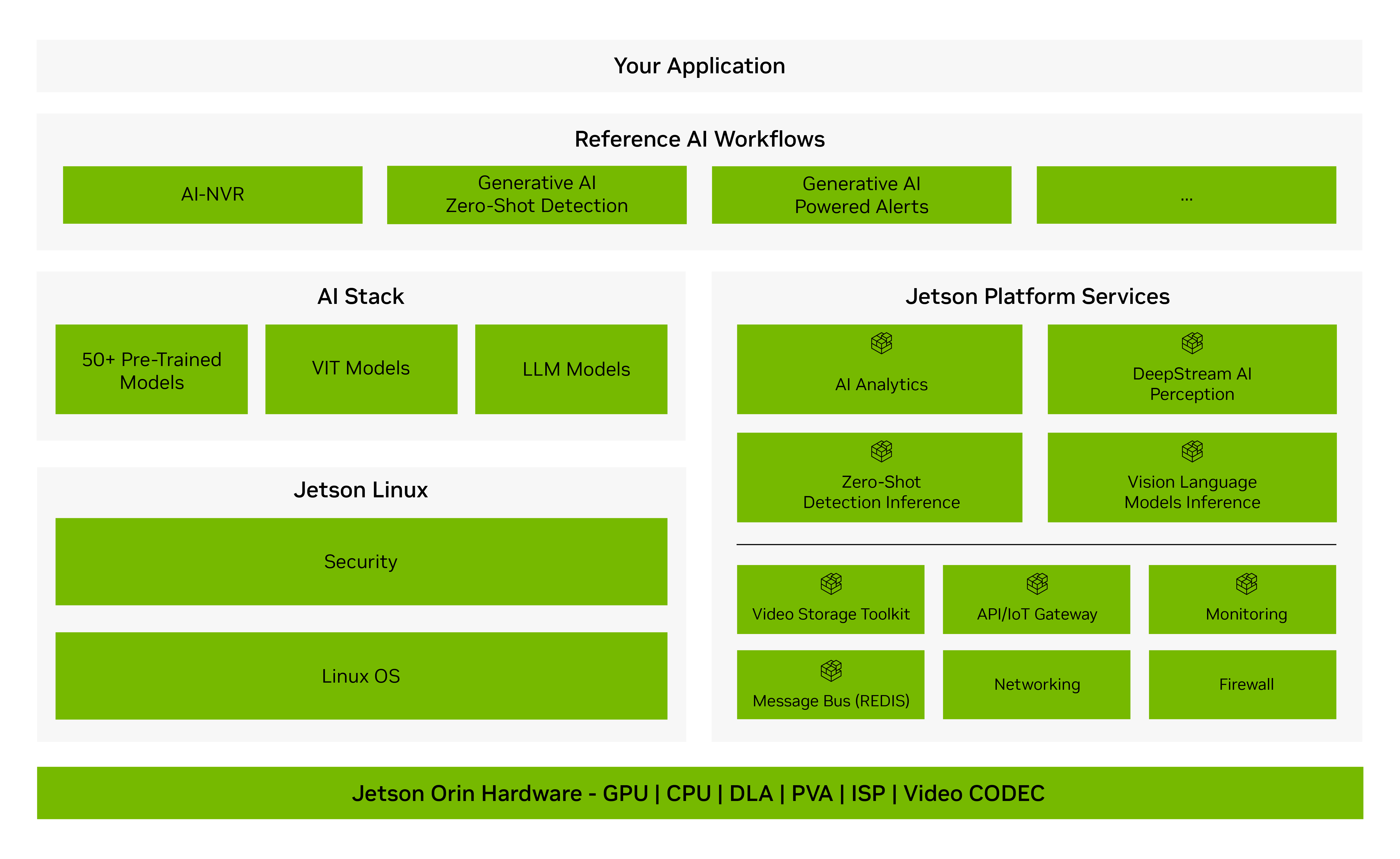Getting Started With Jetson Platform Services
Looking for an easier way to accelerate development and deployment of your sophisticated edge AI applications? Jetson Platform Services, an integral component of NVIDIA JetPack™ SDK, delivers pre-built and customizable cloud-native software services to make it happen. Enterprises, systems integrators, and solution providers can use these modular, API-driven services to build generative AI and edge applications faster and with less effort.

Release Highlights
This latest release ofJetson Platform Services features:
15+ services, including generative AI services, foundation services, and more
Streaming generative AI services for vision language model and zero-shot detection with APIs for dynamic prompting and stream update
DeepStream-based AI perception service for object detection and tracking with APIs for stream update
Media management and storage service with support for streaming protocol such as RTSP and WebRTC
Core foundation services like IoT Gateway, API Gateway, monitoring, and system bus
IoT services for secure edge-to-cloud connectivity and remote API invocation
There are three workflows that highlight the usage and best practices for these platform services—AI NVR, generative AI-powered alerts, and detection. For more information about how to get started, refer to the Quick Start Guide.
Jetson Platform Services are now part of JetPack and can be downloaded using either the NVIDIA SDK Manager method or through a Debian package.
Follow the steps at Install Jetson Software With SDK Manager.
Featured Resources
Blog: Production Release of JetPack 6
Learn how NVIDIA's new JetPack 6 SDK expands the Jetson platform's flexibility and scalability with microservices and a host of new features.
Blog: Generate Traffic Insights Using YOLOv8 and JetPack 6
Learn how to build intelligent traffic applications using the YOLOv8 object detection model and APIs to generate insights such as vehicle counts and traffic heatmaps.
Blog: Bringing Generative AI to the Edge
Learn how to bring generative AI applications into production faster with Jetson Platform Services in JetPack 6.
Get Started Video Tutorial
Additional Resources
Webinar/Talks
(Webinar part 2) How to Build With Metropolis Microservices for Jetson